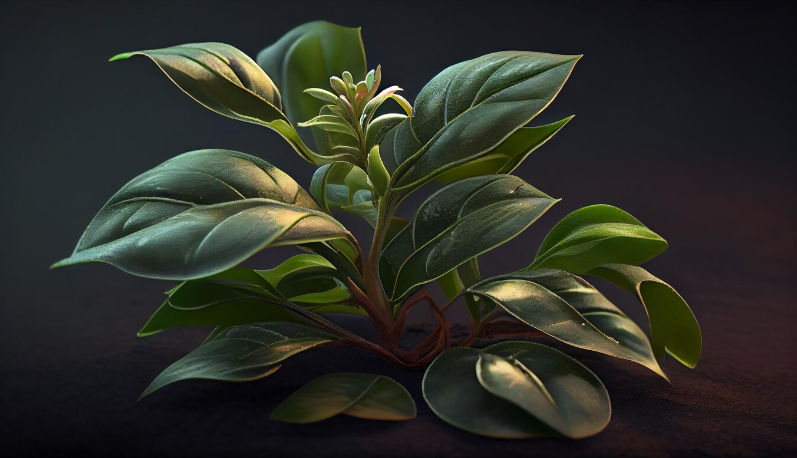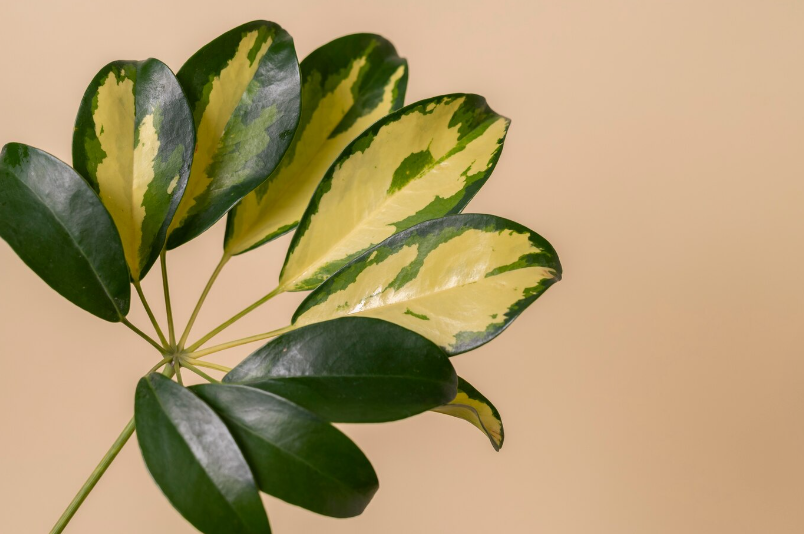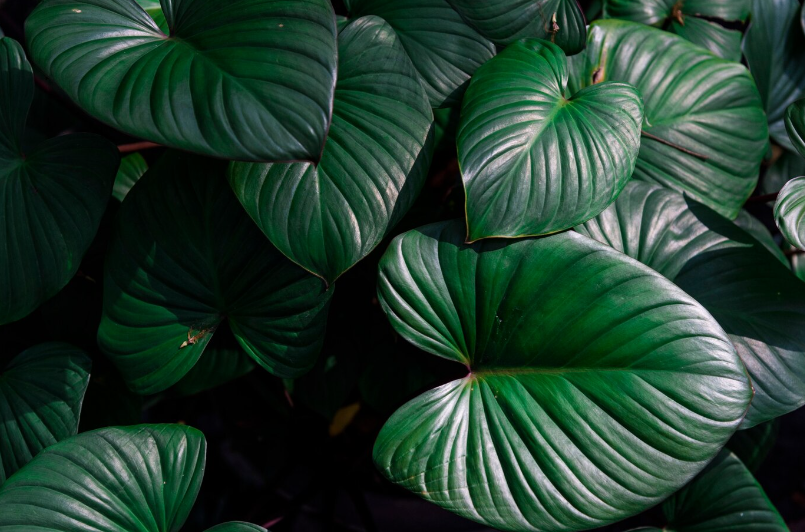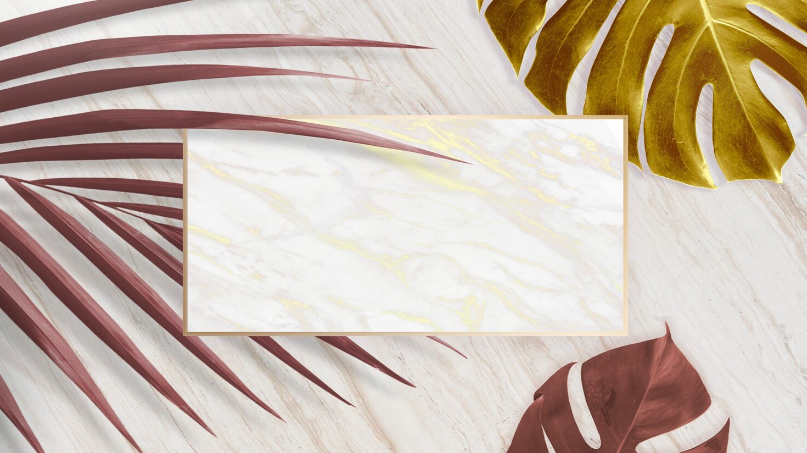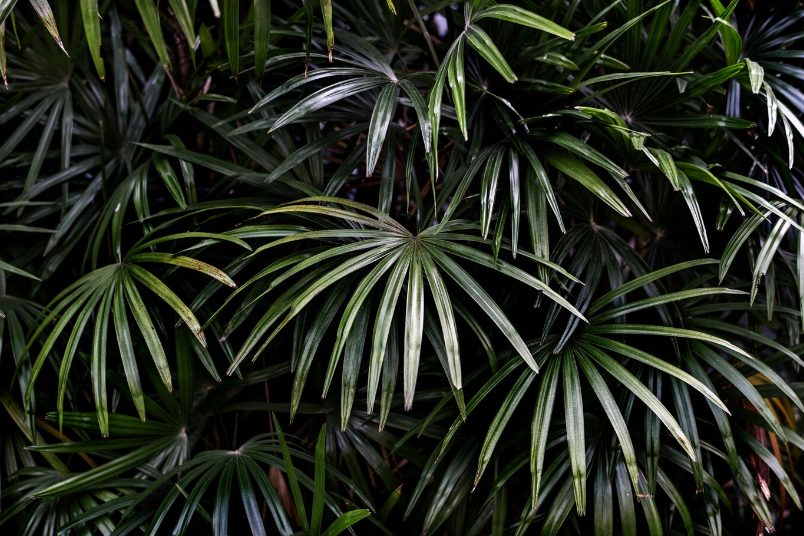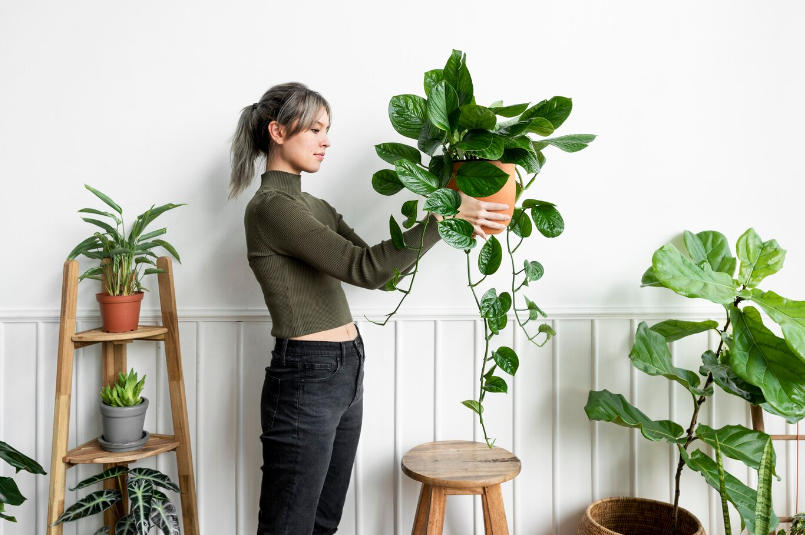Comparing Leaf Structures of Philodendron and Monstera
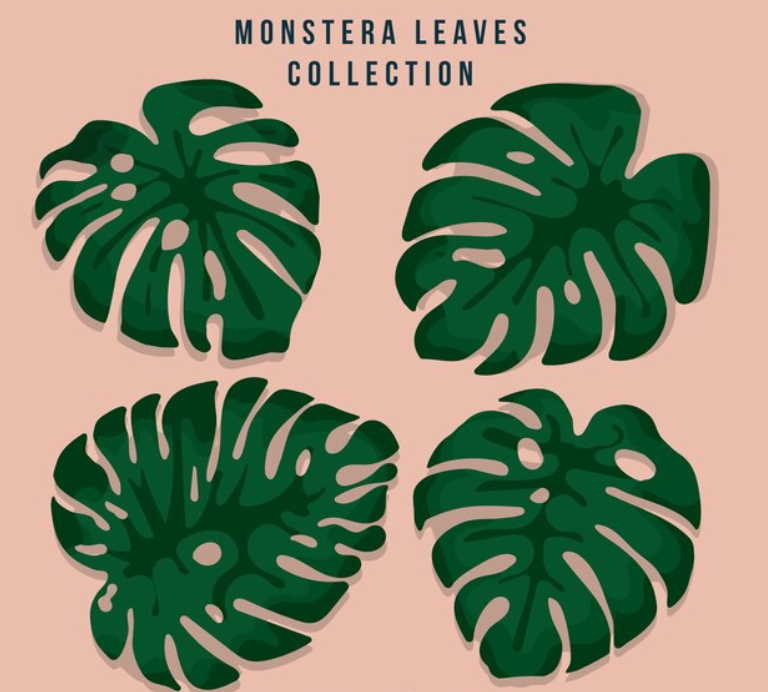
When it comes to indoor plants, the popularity of Philodendrons and Monsteras is undeniable. These tropical plants are known for their lush foliage and unique leaf shapes. However, while they may appear similar at first glance, there are distinct differences in their leaf structures that set them apart.
The Philodendron genus is home to a wide variety of species, each with its own leaf shape and texture. One common characteristic of Philodendron leaves is their heart-shaped form. These leaves often have smooth edges and a glossy texture, adding to their visual appeal. The color of Philodendron leaves can range from vibrant green to deep shades of burgundy.
In contrast, Monstera leaves have a more intricate and dramatic appearance. One of the most distinguishing features of Monstera leaves is their large size and unique perforations. These perforations, also known as fenestrations, give Monstera leaves a distinctive and ornamental look. The leaves of a mature Monstera plant can range in size from small to a whopping three feet in length.
Both Philodendrons and Monsteras are known for their ability to improve indoor air quality by filtering out toxins and releasing oxygen. They are also relatively easy to care for, making them popular choices for plant enthusiasts of all skill levels. Whether you prefer the elegant simplicity of Philodendron leaves or the bold and dramatic look of Monstera leaves, incorporating these plants into your indoor space is sure to add a touch of natural beauty.
Introduction to Philodendron and Monstera Leaf Structures
Philodendron and Monstera are two popular genera of plants known for their attractive and unique leaf structures. Both plants belong to the family Araceae, which comprises more than 3,000 species.
The leaves of Philodendron and Monstera are often large and showy, making them popular choices for indoor and outdoor gardens. These plants are prized for their foliage, which adds a touch of tropical beauty to any setting.
Philodendron leaves come in a variety of shapes, including heart-shaped, arrowhead-shaped, and lobed. The leaves are usually dark green, but can also have variegated patterns or shades of red or purple. Some species of Philodendron have leaves with fenestration, which are small holes or slits that give the leaves a distinctive, lacy appearance.
Monstera leaves, on the other hand, have a unique perforated structure. The leaves are typically large and deeply lobed, with long, arching splits that give them a dramatic, tropical look. The holes in Monstera leaves are called fenestrations, and they serve a functional purpose in the plant’s natural habitat by helping the leaves withstand wind and rain.
Both Philodendron and Monstera are popular choices for indoor plant enthusiasts due to their ease of care and ability to thrive in a variety of conditions. Whether you choose a Philodendron with its diverse leaf shapes or a Monstera with its dramatic fenestrations, these plants are sure to add a touch of exotic beauty to your home or garden.
The Basic Leaf Structure of Philodendrons
Philodendrons are a type of tropical plant that belong to the Araceae family. They are characterized by their distinctive leaves, which have a basic structure that is similar across different species.
The leaves of philodendrons consist of several key components. The main part of the leaf is known as the blade or lamina, which is typically large and flat. The blade is attached to the stem by a stalk called the petiole. The petiole allows the leaf to move and orient itself towards the light source.
On the surface of the blade, there are tiny pores called stomata, which allow the plant to exchange gases with the environment. Stomata are surrounded by specialized cells known as guard cells, which control their opening and closing. This helps to regulate water loss and carbon dioxide uptake.
Philodendron leaves are also equipped with a network of veins, which transport water and nutrients throughout the leaf. The main veins, known as the midrib and secondary veins, provide structural support and help to distribute resources evenly. Smaller veins, called tertiary veins, create a mesh-like pattern that ensures optimal nutrient delivery.
The structure of philodendron leaves is highly adapted to their tropical habitat. The large size of the blades allows them to capture as much light as possible, while the presence of stomata and veins helps to optimize gas exchange and nutrient uptake. Overall, these features contribute to the success and resilience of philodendrons in their environment.
| Leaf Component | Description |
|---|---|
| Blade | The main, flat part of the leaf. |
| Petiole | The stalk that attaches the blade to the stem. |
| Stomata | Tiny pores on the leaf surface for gas exchange. |
| Guard Cells | Specialized cells that control stomata opening and closing. |
| Veins | Network of structures that transport water and nutrients. |
Understanding the Unique Structure of Monstera Leaves
The Monstera plant, also known as the Swiss cheese plant, is characterized by its unique and distinct leaves. These leaves have a fascinating structure that sets them apart from other plants.
One prominent feature of Monstera leaves is their large, intricate perforations. These perforations, often referred to as fenestrations, create a beautiful pattern on the leaf surface. They can vary in size and shape, with some leaves having small and delicate fenestrations, while others have larger and more pronounced ones.
The purpose of these fenestrations is still a subject of debate among botanists. Some believe they help the plant in its natural habitat by allowing wind to pass through the leaves, reducing the risk of damage during strong gusts. Others suggest that fenestrations aid in water regulation by increasing the surface area available for transpiration.
In addition to the fenestrations, Monstera leaves are also characterized by their unique heart-shaped structure. This shape further contributes to the plant’s aesthetic appeal and is often considered one of its defining features. The heart-shaped leaves can grow to impressive sizes, sometimes reaching several feet in length.
Another interesting aspect of Monstera leaves is their rich green color and glossy texture. The glossy surface of the leaves not only adds to their visual appeal but also serves a functional purpose. It allows the leaves to repel water, preventing excessive moisture buildup and reducing the risk of fungal infections.
Overall, the unique structure of Monstera leaves makes them a captivating feature of this plant. Whether appreciated for their aesthetic appeal or studied for their functional significance, these leaves are sure to leave a lasting impression.
| Leaf Structure | Monstera | Philodendron |
|---|---|---|
| Perforations | Large and intricate fenestrations | No or minimal fenestrations |
| Leaf Shape | Heart-shaped | Varies, often broader and elongated |
| Color and Texture | Rich green color, glossy texture | Variable color, often matte texture |
Common Confusions: Philodendron vs. Monstera
Philodendron and Monstera are two types of tropical plants that are often confused with each other due to their similar appearance. While they do share some similarities, there are key differences that can help you tell them apart.
One common confusion is identifying the leaves. Both plants have large, glossy leaves that are often fenestrated, meaning they have holes or splits. However, the shape and arrangement of these splits are different between the two plants.
Philodendron leaves typically have more rounded splits and are arranged in a pinnate pattern, meaning they are arranged along a central vein. On the other hand, Monstera leaves have more elongated and irregularly shaped splits that often extend towards the outer edges of the leaf.
Another key difference is the size of the plants. Philodendron plants tend to be smaller and more compact, making them a popular choice for indoor gardens and small spaces. Monstera, on the other hand, can grow quite large, with leaves that can reach up to several feet in length. These larger plants are often used as statement pieces in larger indoor spaces or as outdoor ornamental plants.
When it comes to care, Philodendron and Monstera have similar requirements. Both plants prefer bright, indirect light and well-draining soil. They also thrive in humid environments and benefit from regular misting or placing them near a humidifier.
In conclusion, while Philodendron and Monstera may look similar at first glance, paying attention to the shape of the leaves and the size of the plants can help you tell them apart. Understanding these differences will allow you to choose the right plant for your space and provide them with the care they need to thrive.
Distinguishing Between Monstera and Philodendron
Although both Monstera and Philodendron belong to the same family of plants, Araceae, there are key differences that can help you distinguish between the two.
One of the main differences is the leaf structure. Monstera leaves are generally larger and more serrated, with prominent splits and holes. The leaf shape often resembles that of a heart or a palm, giving it a unique and striking appearance. On the other hand, Philodendron leaves are usually smoother and have a more uniform shape, with little to no splitting or holes.
Another distinguishing factor is the growth habit. Monstera plants tend to grow more vine-like, with long stems and aerial roots that allow them to climb and attach to surfaces for support. Philodendrons, on the other hand, have a bushier growth habit and tend to grow more compactly. They may also produce aerial roots, but these are usually less developed compared to those of Monstera.
Furthermore, the leaf color and variegation patterns can also help in telling these plants apart. Monstera leaves can come in various shades of green, sometimes with splashes of white or cream-colored variegation. Philodendron leaves also come in different shades of green, but they are generally solid in color and rarely have variegation.
Overall, while Monstera and Philodendron may share some similarities, careful observation of their leaf structure, growth habit, and leaf color can assist in distinguishing one from the other.
Key Identifiers to Differentiate Monstera from Philodendron
While monstera and philodendron belong to the same family of Araceae and share similarities in their leaf structures, there are some key identifiers that can help distinguish between the two plants.
- Leaf Shape: Monstera leaves are typically perforated with holes, giving them a distinctive swiss cheese appearance. In contrast, philodendron leaves are usually heart-shaped or elongated with smooth edges.
- Leaf Size: Monstera leaves can grow significantly larger than philodendron leaves. Mature monstera leaves can reach up to 2 feet in size, whereas philodendron leaves are generally smaller, ranging from a few inches to a foot in length.
- Growth Habit: Monstera plants tend to have a vining growth habit, often climbing and trailing along surfaces. On the other hand, philodendrons can display a variety of growth habits, including both vining and upright forms.
- Leaf Texture: Monstera leaves have a leathery texture with a shiny surface, while philodendron leaves can vary in texture, including smooth, velvety, or glossy.
- Leaf Color: Monstera leaves are typically dark green, although some varieties may have variegations of lighter green or white. Philodendron leaves can also be green, but they come in a wide range of colors, including shades of green, red, and even black.
By observing these key identifiers, you can easily differentiate between a monstera plant and a philodendron plant, making it easier to identify and care for these popular houseplants.
The Phenomenon of Leaf Fenestration in Monsteras
Fenestration refers to the presence of natural openings or windows in the leaves of plants. This intriguing phenomenon is especially prominent in the Monstera genus, commonly known as Swiss cheese plants.
Leaf fenestration in Monsteras occurs through a process called leaf perforation. As the plant matures, it develops special cells called trichosclereids. These cells are responsible for creating the unique patterns of holes and gaps in the foliage.
The purpose of leaf fenestration in Monsteras is still a topic of study and debate among botanists. One theory suggests that these windows allow the plant to optimize its exposure to sunlight, allowing light to pass through the holes and reach the lower leaves. This adaptation is thought to be beneficial in the dense and shady rainforest environments where Monsteras naturally grow.
Another theory suggests that fenestration in Monsteras may function as a defense mechanism against wind damage. The holes in the leaves allow the wind to pass through without exerting excessive force on the foliage, reducing the risk of leaf tearing or breakage.
Regardless of the exact purpose, leaf fenestration in Monsteras adds a unique aesthetic appeal to the plant. The delicate patterns of windows and gaps create a visually striking foliage that is highly sought after by plant enthusiasts and collectors.
It is worth noting that leaf fenestration is not exclusive to Monsteras. Some other plants, such as certain species of Philodendron, also exhibit this phenomenon to varying degrees. However, it is the Monstera genus that is most famous for its distinct leaf perforation patterns.
Overall, the phenomenon of leaf fenestration in Monsteras is a fascinating aspect of plant biology. It showcases the remarkable adaptations and diversity found in nature, while also providing a visually appealing feature that adds to the allure of these unique plants.
Varieties Often Mistaken for Each Other
Both Philodendron and Monstera have similar leaf shapes and patterns, which often leads to confusion and misidentification. However, there are some distinct differences that can help you tell them apart.
| Philodendron | Monstera |
|---|---|
| The leaves of Philodendron plants are usually heart-shaped or oval with a smooth texture. They have a glossy appearance and often feature variegated patterns with shades of green or yellow. | Monstera leaves, on the other hand, are typically large and perforated with distinct cuts or splits along the edges. These splits give them an unmistakable “swiss cheese” appearance. Monstera leaves are also known for their unique fenestrations. |
| Philodendrons are known for their climbling or trailing growth habit, often vining up trees or support structures. | Monstera plants, on the other hand, have a more upright growth habit, with leaves arranged in a rosette formation at the base of the plant. |
By closely examining the leaf shape, pattern, and growth habit, you can distinguish between Philodendron and Monstera plants and avoid mistaking one for the other.
In-Depth Analysis of Monstera Deliciosa Leaves
The Monstera Deliciosa, also known as the Swiss Cheese Plant, is a tropical vine native to Mexico and Central America. Its leaves are one of its most distinguishing features, with their unique and intricate patterns. In this in-depth analysis, we will take a closer look at the various characteristics of Monstera Deliciosa leaves.
- Leaf Size and Shape: Monstera Deliciosa leaves are typically large and heart-shaped, reaching lengths of up to 90 cm (35 inches). The leaves have deep lobes and large perforations, giving them their signature Swiss cheese-like appearance.
- Leaf Texture: The leaves of Monstera Deliciosa have a lush and glossy texture, which adds to their overall attractiveness. The smooth surface of the leaves also allows them to shed water easily, making them resistant to moisture.
- Leaf Color: The color of Monstera Deliciosa leaves can vary depending on the plant’s age and the amount of sunlight it receives. Young leaves are typically light green and have fewer perforations, while mature leaves turn darker green and develop more perforations.
- Leaf Perforations: One of the most distinctive characteristics of Monstera Deliciosa leaves is their large and irregular perforations. These perforations, or fenestrations, are believed to serve a purpose in the plant’s natural habitat by allowing wind and rain to pass through, reducing the risk of damage from strong winds or heavy rainfalls.
- Leaf Growth: Monstera Deliciosa leaves start as small, solid leaves but gradually develop their distinctive fenestrations as they mature. This process can take several years, and the mature leaves can measure several feet in length. The rate of leaf growth can be influenced by factors such as light intensity, moisture levels, and temperature.
Overall, the Monstera Deliciosa leaves are not only visually stunning but also serve important functions in the plant’s survival. Their large size, fenestrations, and glossy texture make them a unique and fascinating subject of study for botanists and plant enthusiasts alike.
The Anatomy of Monstera Deliciosa’s Leaves
The leaves of Monstera deliciosa, also known as the Swiss cheese plant, exhibit a unique and intricate structure that contributes to its distinctive appearance and functionality.
- Leaf Blade: The large, heart-shaped leaf blade is the most recognizable feature of Monstera deliciosa. Its surface is smooth and glossy, featuring characteristic lobes and perforated holes, resembling Swiss cheese.
- Lobes: The lobes of Monstera deliciosa’s leaves are deep indentations or divisions in the leaf blade. These lobes give the leaf its distinct shape and add to its visual appeal.
- Leaf Perforations: The perforated holes found in the leaf blade are known as leaf perforations or fenestrations. These fenestrations vary in size and shape and are thought to serve various purposes, including increased light absorption and improved air circulation.
- Leaf Veins: Monstera deliciosa’s leaves feature prominent veins that run through the leaf blade, providing structure and support. The veins are usually a lighter color than the rest of the leaf blade and can create interesting patterns.
- Intracellular Space: Within the leaf blade, Monstera deliciosa contains intracellular space that is filled with a spongy tissue. This tissue aids in water storage and plays a role in regulating moisture levels in the plant.
- Cuticle: The leaf surface of Monstera deliciosa is covered by a cuticle, which is a waxy layer that helps reduce water loss through evaporation. The cuticle also provides protection against pests and diseases.
- Stomata: The undersides of Monstera deliciosa’s leaves are covered with tiny openings called stomata. These stomata allow for gas exchange, enabling the leaf to take in carbon dioxide and release oxygen during photosynthesis.
The intricate anatomy of Monstera deliciosa’s leaves not only contributes to its unique aesthetic appeal but also plays a vital role in the plant’s survival and adaptation to its environment.
Why Monstera Leaves Develop Holes (Fenestrations)
The fenestrations, or holes, in the leaves of Monstera plants are a fascinating adaptation that serves several purposes. These holes, often called “Swiss cheese plant” leaves, are unique to Monstera deliciosa and some other species in the genus.
One possible reason for the development of fenestrations is to allow sunlight to reach the plant’s lower leaves in its natural habitat – the rainforests of Central and South America. The large, broad leaves of Monstera plants can often grow close together, and the fenestrations help to increase light penetration to the lower parts of the plant, allowing them to photosynthesize efficiently.
Additionally, the fenestrations may provide an advantage in windy rainforest environments. The holes allow wind to pass through the leaves, reducing the chance of damage from strong gusts. This adaptive feature helps the plant to withstand the natural conditions of its native habitat.
Another potential benefit of fenestrations is an adaptation to the unique pollination process of Monstera flowers. In the wild, Monstera plants rely on a specific type of insect, called anthurid flies, to pollinate their flowers. The fenestrations in the leaves may attract these insects by providing a suitable habitat or signaling the presence of the flowers.
Overall, the development of holes in Monstera leaves is a fascinating natural adaptation that serves multiple purposes. From increasing light penetration to providing wind resistance and potentially attracting pollinators, the fenestrations in Monstera leaves are a remarkable example of nature’s ingenuity.
Growth Patterns and Leaf Development in Monstera Deliciosa
The Monstera deliciosa, also known as the Swiss cheese plant, is a popular houseplant renowned for its unique leaf patterns and growth patterns. Understanding its growth patterns and leaf development can provide insight into its care and maintenance.
Monstera deliciosa exhibits a vining growth habit, meaning it climbs and sprawls as it matures. Its stems are flexible and can grow up to several meters in length. As the plant grows, it develops aerial roots that enable it to attach and climb on surfaces such as trees or support structures.
The leaves of Monstera deliciosa start as small, heart-shaped leaves, commonly referred to as juvenile leaves. These juvenile leaves have solid, entire margins and lack the characteristic fenestrations or holes that are synonymous with the plant’s mature leaves. As the plant matures, the leaves undergo a transformation.
Once the plant reaches a certain maturity, it starts producing mature leaves that are significantly larger and display the iconic fenestrations. These fenestrations are natural holes that form in the leaves, giving them their distinctive appearance. The holes are thought to have evolved as a way for the plant to better withstand wind and rainfall in its native tropical rainforest habitat.
The development of fenestrations in Monstera deliciosa leaves is influenced by various factors, including light and age. Adequate light is crucial for the plant to develop its characteristic leaf patterns. Insufficient light can result in fewer or smaller fenestrations. Additionally, as the plant ages, the fenestrations tend to become more pronounced.
In conclusion, Monstera deliciosa exhibits a vining growth pattern, with flexible stems and aerial roots for climbing. Its leaves undergo a transformation from small, solid juvenile leaves to larger, fenestrated mature leaves. Understanding these growth patterns and leaf development can help enthusiasts provide optimal care for their Monstera deliciosa plants.
Philodendron Leaf Varieties and Characteristics
Philodendrons are a diverse group of plants known for their unique and eye-catching leaf varieties. With over 400 species of Philodendron, there is a wide range of leaf shapes, sizes, textures, and colors to choose from.
One popular type of Philodendron is the Philodendron Brasil. This variety features heart-shaped leaves that are primarily green with vibrant yellow stripes running through them. The bold variegation of the leaves makes the Philodendron Brasil a striking addition to any indoor space.
Another captivating variety is the Philodendron Pink Princess. As the name suggests, this Philodendron flaunts leaves with a stunning combination of pink, green, and white colors. The vibrant pink variegation creates a captivating contrast against the deep green base color.
If you’re looking for a Philodendron with large leaves, you might consider the Philodendron Selloum. This variety boasts massive, deeply lobed, and glossy green leaves that can reach up to 3 feet in length. The unique leaf structure of the Philodendron Selloum adds a touch of elegance and drama to any space.
For those who prefer a more understated look, the Philodendron Micans is an excellent choice. This variety features velvety green leaves with iridescent copper-colored undersides. The combination of the lush green and shimmering copper hues gives the Philodendron Micans a sophisticated and luxurious appearance.
Whether you prefer bold and colorful or subtle and elegant, there is a Philodendron leaf variety to suit every taste. With their unique leaf structures and characteristics, Philodendrons are sure to add beauty and interest to any indoor or outdoor garden.
Exploring the Diversity of Philodendron Leaf Shapes
Philodendrons are a diverse group of plants known for their beautiful foliage. One of the most captivating aspects of philodendrons is the wide range of leaf shapes they exhibit. From elongated and lanceolate leaves to heart-shaped and palmate leaves, philodendrons offer a spectacular assortment of forms that can add interest and intrigue to any indoor or outdoor space.
One common leaf shape among philodendrons is the spade or heart shape. These leaves are broad at the base and taper to a point, resembling the traditional shape of a heart. This leaf shape can be seen in popular philodendron varieties such as the Philodendron hederaceum and Philodendron scandens. The heart shape provides a soft and romantic touch to any room, making these philodendrons a popular choice for home decor.
Another intriguing leaf shape found in philodendrons is the palmate leaf. Palmate leaves have multiple lobes that radiate out from a central point, resembling the shape of a hand or a palm. This leaf shape can be seen in varieties such as the Philodendron bipinnatifidum, which is commonly known as the “split-leaf philodendron” due to its deeply lobed palmate leaves. The palmate shape adds a unique and exotic feel to any garden or indoor setting.
Philodendrons also exhibit variations in leaf size. Some species have large, showy leaves that can reach impressive sizes, such as the Philodendron selloum, while others have small, delicate leaves. The diversity in leaf size allows philodendrons to fit into a wide range of spaces and design styles.
In addition to the various leaf shapes and sizes, philodendrons also come in a multitude of colors and patterns. Some species have vibrant green leaves, while others have variegated patterns of green and cream, or even pink and purple tones. The wide range of colors and patterns adds another level of visual interest and allows for endless possibilities in plant combinations and arrangements.
Overall, exploring the diversity of philodendron leaf shapes is a fascinating journey that unveils the incredible range of forms and patterns this plant family has to offer. Whether you prefer the classic heart shape, the exotic palmate leaves, or the bold and vibrant colors, there is a philodendron for every taste and style.
Unique Leaf Shapes Among Philodendron Species
Philodendron plants are known for their stunning foliage, and their leaves come in a variety of shapes and sizes. Each species of Philodendron has its own unique leaf shape, making them visually distinct and appealing to collectors.
One example of a Philodendron species with a unique leaf shape is the Philodendron bipinnatifidum, also known as the Tree Philodendron. This plant has large, deeply lobed leaves that resemble the shape of a hand or a palm, giving it the common name “Lacy Tree Philodendron”. The lobes of the leaves have a distinctive ruffled edge, adding to the plant’s overall aesthetics.
Another Philodendron species with a unique leaf shape is the Philodendron selloum, also known as the Philodendron Hope. This plant has large, deeply lobed leaves that are often described as elephant ear-shaped due to their resemblance to the ears of an elephant. The leaves have a glossy texture, and their lobes have a wavy edge, giving them an elegant and tropical look.
The Philodendron birkin is another species that stands out with its unique leaf shape. The leaves of this plant are small and elongated with distinct variegation. The variegation appears as vertical stripes of light green against a dark green background, creating a striking visual contrast. The overall shape of the leaves is elongated and tapered, resembling a blade or a sword.
In summary, there is a wide variety of leaf shapes among Philodendron species, each adding its own unique appeal to these popular houseplants. Whether it’s the palm-like leaves of the Philodendron bipinnatifidum, the elephant ear-shaped leaves of the Philodendron selloum, or the elongated and variegated leaves of the Philodendron birkin, there is a Philodendron species for every leaf lover.
The Functionality of Philodendron Leaf Structures
Philodendrons are well-known for their unique leaf structures, which serve several important functions. These structures not only contribute to the plant’s overall appearance but also play a vital role in its survival and growth.
One key function of Philodendron leaf structures is their ability to capture sunlight and facilitate photosynthesis. The wide, flat shape of the leaves allows for maximum exposure to sunlight, ensuring that the plant can produce sufficient food through the process of photosynthesis. The presence of chlorophyll in the leaves enables them to absorb light energy and convert it into chemical energy.
Another important role of Philodendron leaf structures is their ability to regulate transpiration. Transpiration is the process by which plants release water vapor through small openings called stomata. The leaves of Philodendron plants have a high density of stomata, which allows for efficient gas exchange and water vapor loss. This not only helps to cool the plant but also aids in the regulation of its internal water balance.
In addition to capturing sunlight and regulating transpiration, Philodendron leaf structures also serve as a defense mechanism against predators and environmental stressors. Some species of Philodendron have thorns or spines on their leaves, which act as a deterrent to herbivores. The glossy surface of the leaves also provides protection against excessive water loss and acts as a barrier to harmful pathogens.
Furthermore, the leaf structures of Philodendron plants contribute to their ability to climb and attach to surfaces. Many species of Philodendron have aerial roots that emerge from the stem and can attach to trees, rocks, or other supporting structures. These roots not only provide stability but also enable the plant to access additional nutrients and water from the surrounding environment.
In conclusion, the leaf structures of Philodendron plants serve multiple functions that contribute to their growth, survival, and overall well-being. From capturing sunlight and facilitating photosynthesis to regulating transpiration and providing defense mechanisms, these structures play a crucial role in the success of Philodendron plants in their natural habitats.
Symbolism and Misconceptions in Leaf Structures
The leaf structures of plants have long been associated with various symbols and misconceptions. From ancient civilizations to modern culture, leaves have often held symbolic meanings and have been the subject of myths and misconceptions.
In many cultures, leaves are seen as a symbol of growth, renewal, and vitality. This symbolism stems from the fact that leaves are responsible for photosynthesis, the process by which plants convert sunlight into energy. The vibrant green color of leaves is often associated with life and fertility.
However, not all leaves are green. Some plants have leaves in different colors, such as red, yellow, or purple. These colored leaves have also been associated with different meanings. For example, red leaves are often seen as a symbol of passion or love, while yellow leaves can represent happiness or friendship.
Another misconception about leaf structures is that they are solely for the purpose of photosynthesis. While it is true that leaves play a vital role in a plant’s ability to produce energy, they also serve other functions. Leaves can help regulate water loss through small openings called stomata, and they can also provide protection for the plant from insects or other potential threats.
Furthermore, the shape and size of leaves can vary greatly between different plant species. Some plants have large, broad leaves that help capture more sunlight, while others have small, needle-like leaves that reduce water loss in arid environments. The diversity of leaf structures reflects the adaptation of plants to their specific environments.
In conclusion, the symbolism and misconceptions surrounding leaf structures are a testament to the cultural significance of plants and their importance in our lives. Whether it is the symbolism of green leaves representing growth and vitality or the misconceptions about their function, leaves continue to fascinate and intrigue us.
Cultural Symbols: What Do Monstera Leaves Represent?
The monstera leaf, with its distinctive large and perforated shape, has become a popular cultural symbol in recent years. It has found its way into various forms of art, design, and fashion, representing different meanings in different contexts.
One of the most common interpretations of the monstera leaf is its connection to tropical and exotic environments. The leaf’s lush green color and unique shape are often associated with the beauty and abundance of tropical regions. It is often used as a symbol of escapism and a longing for adventure in the natural world.
In some cultures, the monstera leaf is also believed to bring good luck and prosperity. It is thought to attract positive energy and abundance into one’s life. Many people display monstera leaves in their homes or workplaces to invite good fortune and success.
Furthermore, the monstera leaf holds a significant place in the world of interior design. Its bold and eye-catching appearance adds a touch of elegance and exoticism to any space. It has become a popular choice for wallpapers, fabric patterns, and decorative elements in home decor.
Additionally, the monstera leaf has gained popularity as a tattoo design. Its intricate patterns and symbolic meanings make it a favorite choice among tattoo enthusiasts. The leaf’s association with growth, exploration, and connection to nature makes it a powerful symbol for personal transformation.
In conclusion, the monstera leaf carries various cultural symbols and meanings. Whether it represents a longing for tropical landscapes, brings good luck, enhances interior design, or serves as a personal symbol of growth, it continues to capture the imagination and inspire creativity in different contexts.
Demystifying Myths: Monstera and Philodendrons in Popular Culture
The Monstera and Philodendron plants have gained significant popularity in recent years, becoming beloved additions to many households across the globe. With their distinct leaf structures and tropical vibes, these plants have captured the attention of plant enthusiasts and designers alike. However, alongside their rise to fame, a few myths and misconceptions have also emerged in popular culture.
One common myth surrounding Monstera and Philodendrons is that they are difficult to care for. While it is true that these plants require specific care to thrive, once you understand their needs, they can be relatively low-maintenance. Both Monstera and Philodendrons prefer indirect light, moderate humidity, and regular watering. With proper care, these plants can flourish and add beauty to any space.
Another misconception is that Monstera and Philodendrons are toxic to pets. While these plants can cause mild oral irritation if ingested, they are not highly toxic to dogs or cats. It is always recommended to keep pets away from all houseplants, as some may cause discomfort or digestive issues if eaten. However, with proper precautions, Monstera and Philodendrons can coexist safely with your furry friends.
Furthermore, there is a belief that Monstera and Philodendron plants are exclusively suited for large homes and open spaces. This is not entirely accurate, as these versatile plants can thrive in a variety of environments. From compact apartments to spacious offices, Monstera and Philodendrons can be adapted to different spaces by adjusting their care routine and providing adequate conditions for growth.
Lastly, some people believe that Monstera and Philodendrons are solely decorative plants, lacking any additional benefits. On the contrary, these plants offer a host of benefits beyond their aesthetic appeal. They are known for their air-purifying qualities, removing harmful toxins from the atmosphere and improving overall indoor air quality. In addition, having plants in your environment can promote relaxation, reduce stress, and increase productivity.
In conclusion, it is essential to separate fact from fiction when it comes to Monstera and Philodendrons in popular culture. These plants may have gained a reputation for being difficult or toxic, but with the right care and understanding, they can thrive and bring joy to any space. By demystifying these myths, we can appreciate the beauty and benefits that Monstera and Philodendron plants offer in our daily lives.
Accurate Plant Identification: Avoiding Common Mistakes
Accurate plant identification is crucial for several reasons, whether you are an avid gardener or a botanist. Mistakes in identifying plants can lead to various consequences, such as choosing the wrong plant for a specific environment or mislabeling plants in a collection. To avoid these common mistakes, it is important to follow a systematic approach and pay attention to the details.
One common mistake when identifying plants is relying solely on their common names. While common names are easier to remember and often widely used, they can be inconsistent and vary from region to region. It is always recommended to use the scientific names, also known as botanical names, which provide a standardized and accurate way to identify plants.
Another mistake to avoid is relying solely on visual characteristics. While the shape, color, and texture of leaves and flowers can be helpful in identification, they should not be the only factors considered. Other features, such as the arrangement of leaves, the presence of hairs or spines, and the type of stem, should also be taken into account.
Furthermore, it is important to gather as much information as possible about the plant. This can include its habitat, geographical distribution, and any specific adaptations it may have. Additionally, looking at the plant’s reproductive structures, such as flowers, fruits, and seeds, can provide valuable clues for accurate identification.
When identifying plants, it is also crucial to consult reliable sources, such as field guides, botanical databases, and reputable websites. These resources can provide detailed descriptions, images, and even interactive keys to help in the identification process. It is important to cross-reference information from multiple sources to ensure accuracy.
Lastly, if you are unsure about the identification of a plant, it is always better to seek help from experts or professionals. Local nurseries, botanical gardens, or university extensions can provide guidance and support in identifying plants. Taking photos of the plant and providing specific details about its habitat and characteristics can assist experts in making an accurate identification.
By avoiding these common mistakes and following a systematic approach, you can enhance your plant identification skills and ensure accurate results. Remember to use scientific names, consider all relevant characteristics, gather comprehensive information, consult reliable sources, and seek assistance when needed. Accurate plant identification is a valuable skill that can greatly enhance your understanding and appreciation of the plant world.
FAQ:
What are the key differences between the leaf structures of Philodendron and Monstera?
The key differences between Philodendron and Monstera leaf structures lie in their size, shape, and fenestrations. Philodendron leaves tend to be smaller and have a more heart-shaped or oval shape, while Monstera leaves can grow much larger and have a more unique, fenestrated structure.
What does “fenestrated” mean when referring to Monstera leaves?
“Fenestrated” means that the Monstera leaves have natural holes or gaps in them. These holes are called fenestrations and give the leaves their distinctive appearance, which is often described as Swiss cheese-like.
Do all species of Philodendron and Monstera have fenestrated leaves?
No, not all species of Philodendron and Monstera have fenestrated leaves. While fenestrations are more commonly seen in certain species of Monstera, such as Monstera deliciosa, other species may have different leaf structures.
Are there any similarities in the leaf structures of Philodendron and Monstera?
Yes, there are some similarities in the leaf structures of Philodendron and Monstera. Both plants belong to the same family, Araceae, and their leaves have a similar overall shape and venation pattern. However, Monstera leaves tend to have more pronounced lobes and fenestrations compared to Philodendron leaves.
Which plant is easier to care for in terms of leaf maintenance, Philodendron or Monstera?
In terms of leaf maintenance, Philodendron is generally considered easier to care for compared to Monstera. Philodendron leaves are usually smaller and have less intricate structures, making them less prone to dust accumulation and easier to clean. Monstera leaves, with their larger size and fenestrations, may require more attention to keep them looking clean and healthy.
